I finally had time to finish up a TextileArtist.org Stitch Club workshop (that I began when there was still snow on the ground) by Valerie S. Goodwin. She tasked us with making a map, and I picked one of my favorite places: gramma’s.
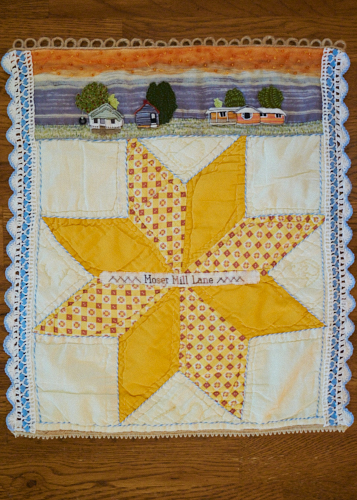
I really liked Valerie’s workshop and bought just the right kind of sheer fabric, painted it just as she suggested, and even stitched on it to make contours. I also added the ponds, and had something like 100 tiny painted fabric circles cut out to add around as the trees (not shown). To see it better in the photo, I set it on top of some blue fabric. However much I liked Valerie’s examples and the other Stitch Club members’, I simply did not like mine. It just wasn’t how I felt gramma’s should be represented, I guess. This was one of the reasons why the project didn’t move forward quickly.
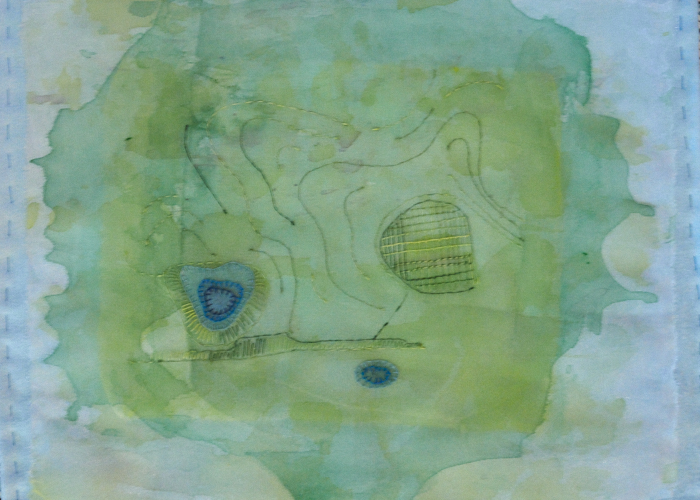
Valerie showed an example or two of a map that had a scene stitched across the top, and I really liked that. This gave me the idea to include tiny houses. And, to me, the houses are all on the same property, being neighbors and all, hence why they all appear on my map of gramma’s.
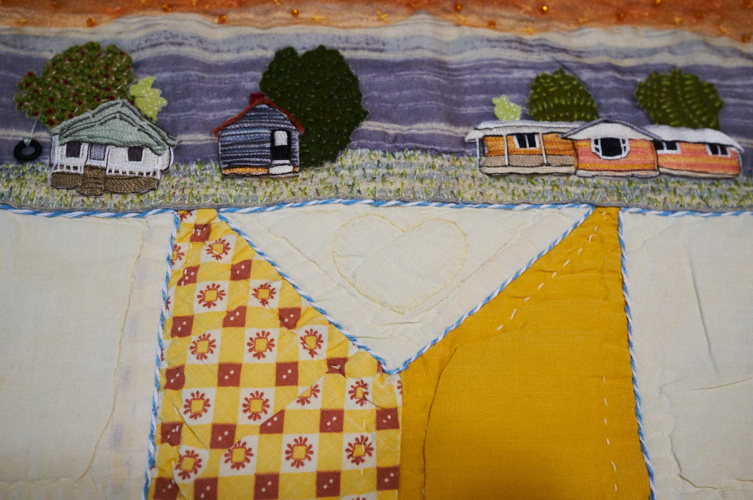
They did not turn out as neatly as I had imagined, but I learned some lessons and would be able to correct that next time. They are stitched onto an old silk scarf that had belonged to Boy’s gramma. I liked the color variation, as it felt like sky. I also added so many tiny straight stitches for grass. Except near the sweet gum tree (or on the driveways full of crushed gravel!), you could always run around barefoot at gramma’s!
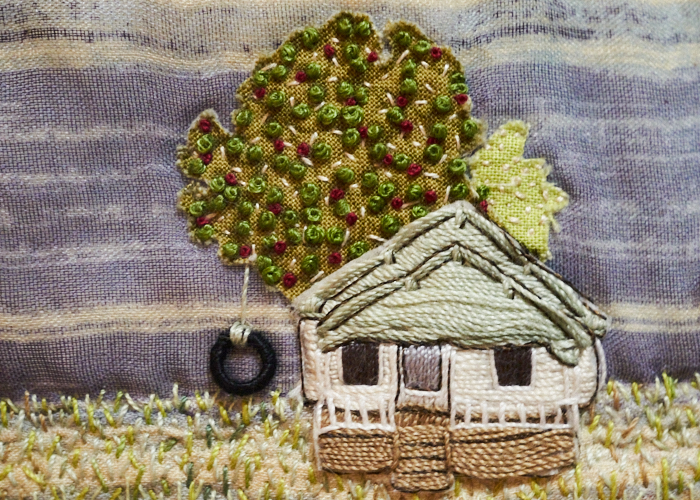
The white one belonged to my great grandparents (you may recall Irma; the house is also listed in a notable historic architecture book). My great gramma had eleven children, so some of her grandchildren ended up being also around my age or even younger. She’d babysit them and sometimes I’d go eat her goldfish or cookie stash with my cousins and play on the tire swing hanging from the cherry tree (or drink from the well outback or ponder how there was an outhouse). Seed stitch and colonial knots finish out the trees. I coiled a small piece of wire and wrapped it in thread for the tire swing.
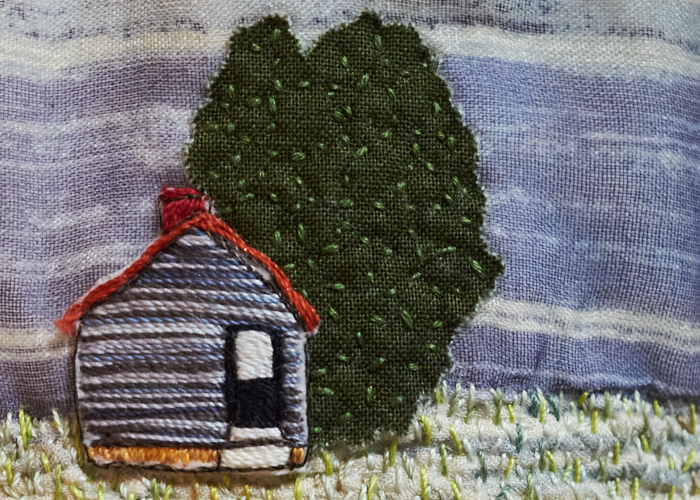
The wood house belonged to my great great grandparents (Irma’s in-laws) and had been moved from across the field some time before I was ever born. It was always a mystery to me since it was locked and I could never see through any windows what laid inside (storage for some old furniture, mostly).
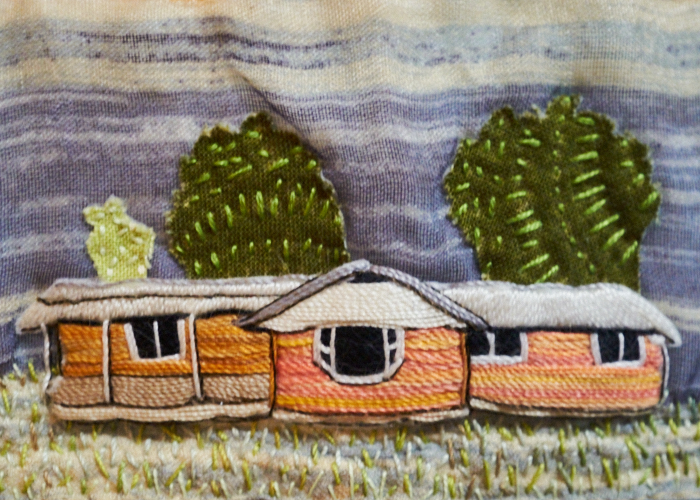
The orange brick home belongs to my grandparents (Irma’s daughter and son-in-law). I wanted to add a corn field to the side, or maybe hay bales, but thought better of it. I also considered adding a white cat, but knew the tiny scale would prove problematic. I could have also added deer, or maybe a horse, from memories way back when. Or grapes, as there was always homemade wine. These thoughts gave me the idea to stitch onto the quilt block.
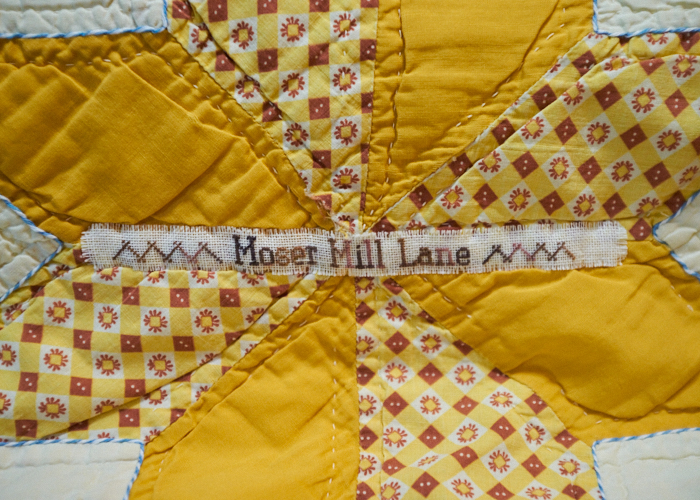
It was this quilt that pulled the project back out of the WIP oubliette for a time. The last time I had seen gramma, I asked her if she had a very old quilt that I could use as a cutter’s quilt (a quilt too ragged to use as such, but that can be reborn as a new project). She pulled out a star quilt that wasn’t hers or done by anyone else in the family (she thinks it was an estate / yard sale find), which was exactly what I needed to not incur any guilt! When the idea occurred to me to see if it could work as a background to the map, I saw this block that was perfect since her house is orange. I had a strip of loosely woven linen that I embroidered the name of her road on and placed it right in the center. Then, I outlined the block with blue butcher twine, which seemed fitting since gramma and grampa had a small butchering business. Plus, I wanted to tone down the orange some and bring in a different color.
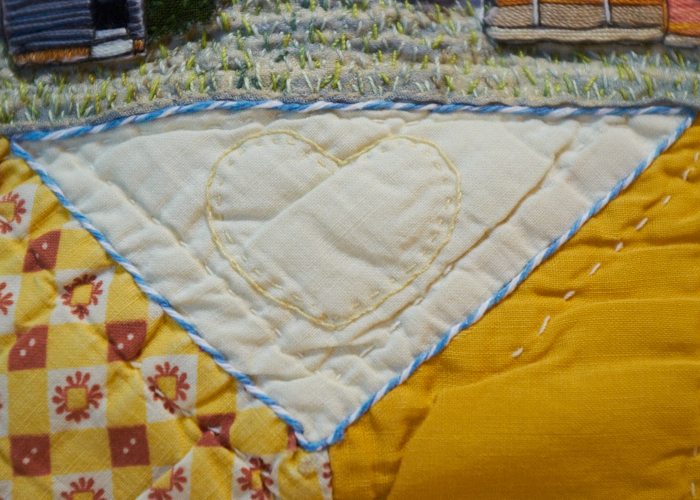
I wanted to hide these motifs so they would not take away from the overall piece, so I chose to use a similarly colored thread. The first choice was a simple heart, for love and family.
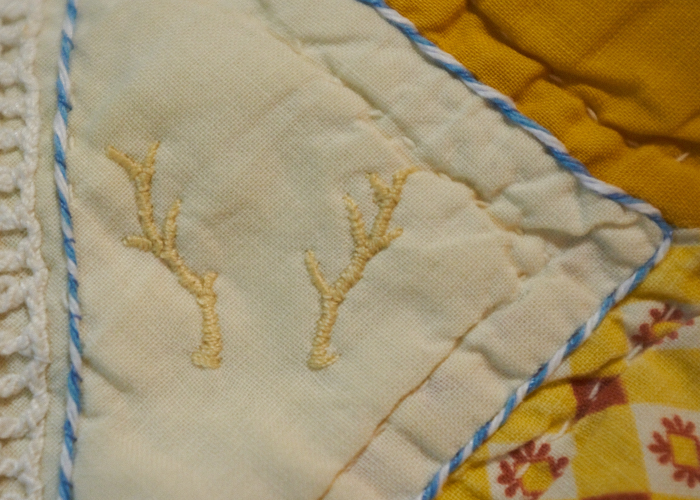
After some ruminating, I decided deer needed to be represented. I’m not sure I am in love with these antlers, but I think the messiness of all these stitchings help them blend in with the aged quilt block.
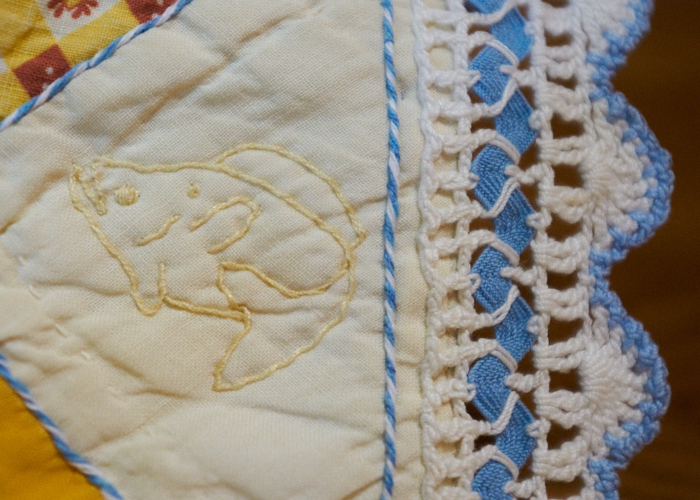
I then had two spots left, and thought again about what thoughts and feelings are invoked when I think about gramma’s. The pond was always a special place, and she absolutely loves fishing, so I added a fish for her.
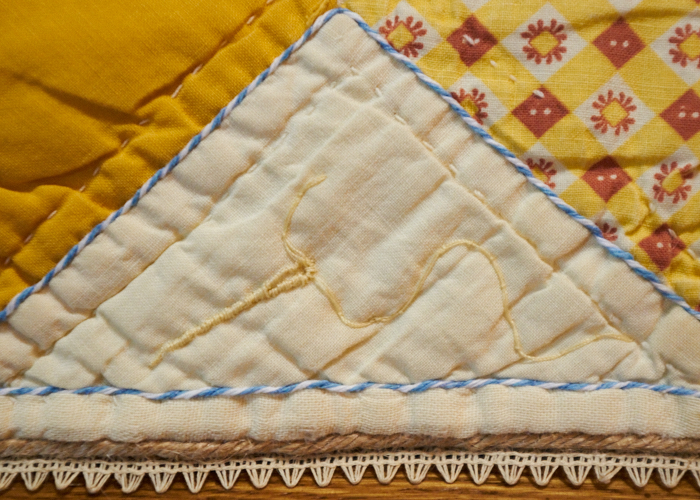
And then, looking at the “map” as a whole, I had to acknowledge that both my great gramma and gramma hand quilted, so sewing needed to be represented, thus a needle and thread.
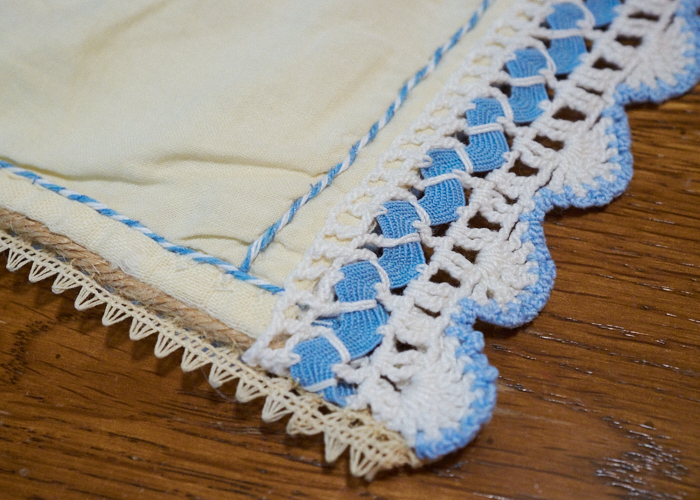
To finish off the bottom, I added a length of binder twine, and some very old lace. I got very excited when I found the blue and white crochet and ricrac edging in my stash – it actually had come from gramma, and had once been the decorative edge of a pillow case. She always had fun pillow cases for us when we stayed the night. Plus, it helped add more of her favorite color in, blue.
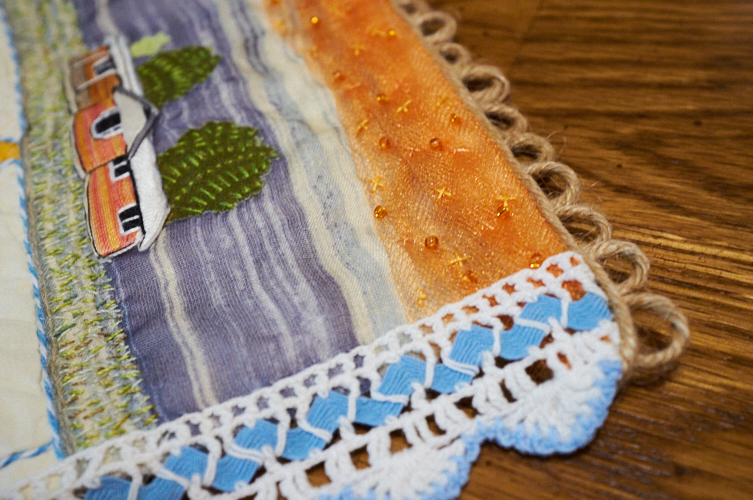
I needed to balance out the orange though, so I used some sheer fabric and tacked it down with cross stitches and beads across the top. The colors themselves do not really call to mind a starry sky, but that is also something I think about at gramma’s since it is a less populated place than many others. I added another length of twine, but felt there needed to be something just a bit heavier to round out the entire thing, so I made tiny little loops (that can also serve as a way to hang the piece).
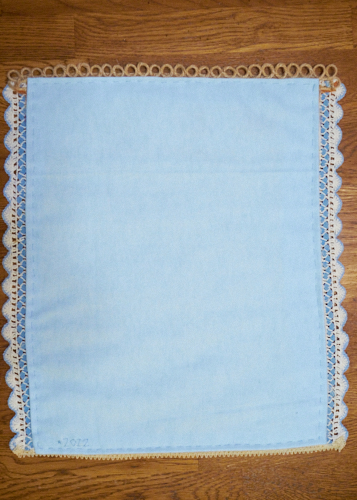
The back is very simple; I just tidied it up with some blue cotton flannel and straight stitches, signing and dating it. And that’s that!
Thinking about all the things I could include on the “map” made me realize that while I did not create a visual map as Valerie suggested, I had created a memory, or emotional, map. This concept has given me way too many ideas, because it is just like the “mood board” concept I fell in love with through Mandy Pattullo’s project (here). I’m thinking I should explore this process more!

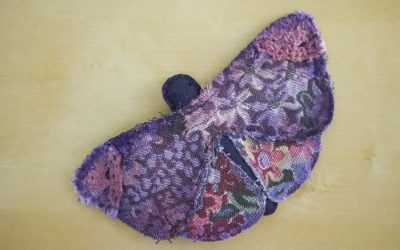
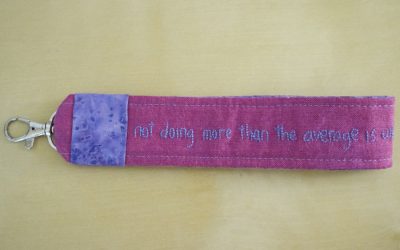
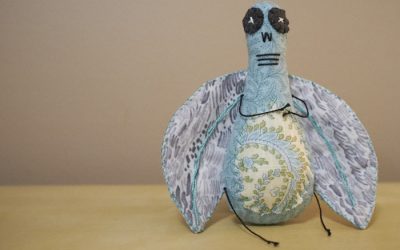
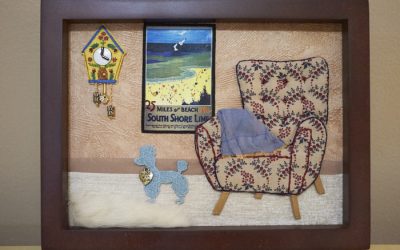
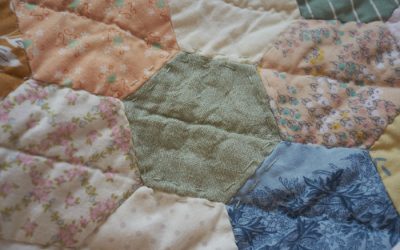
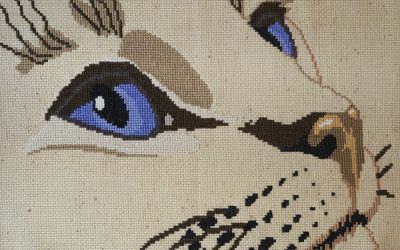
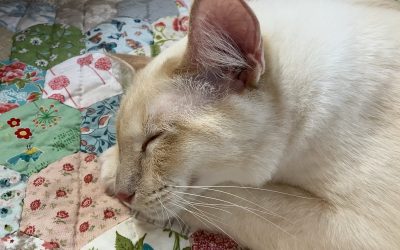
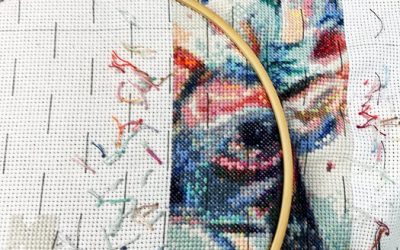
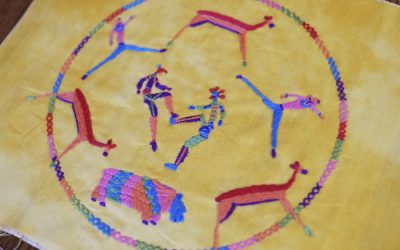
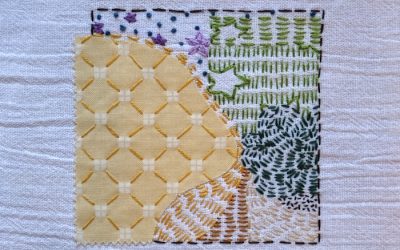
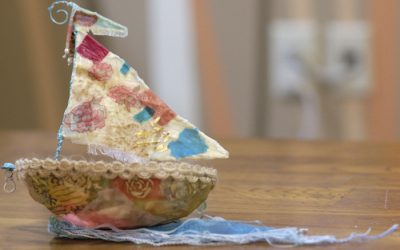
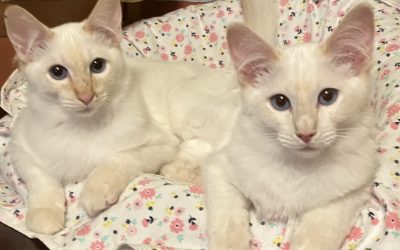
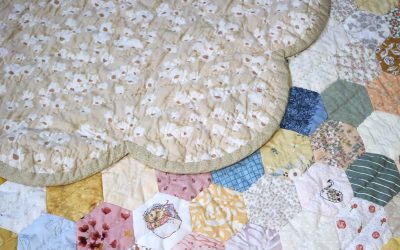
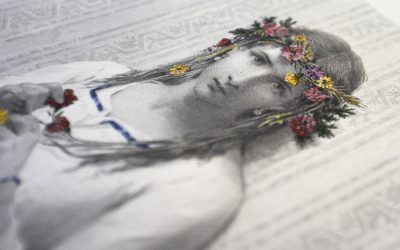
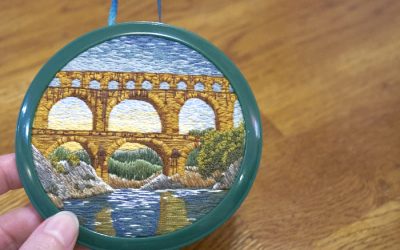
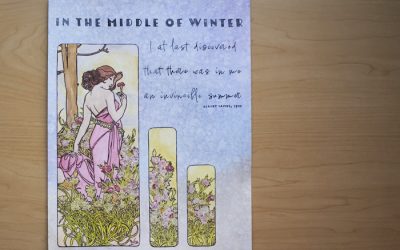
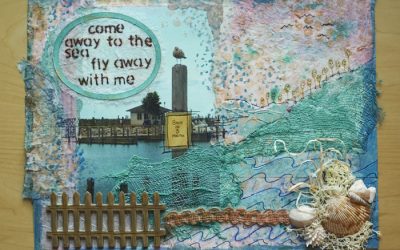
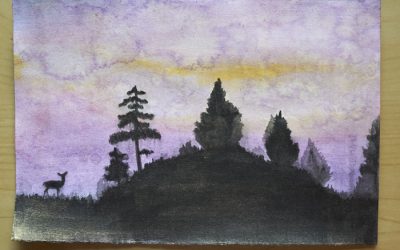

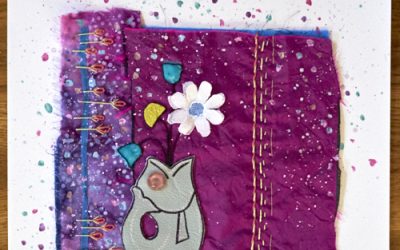
0 Comments